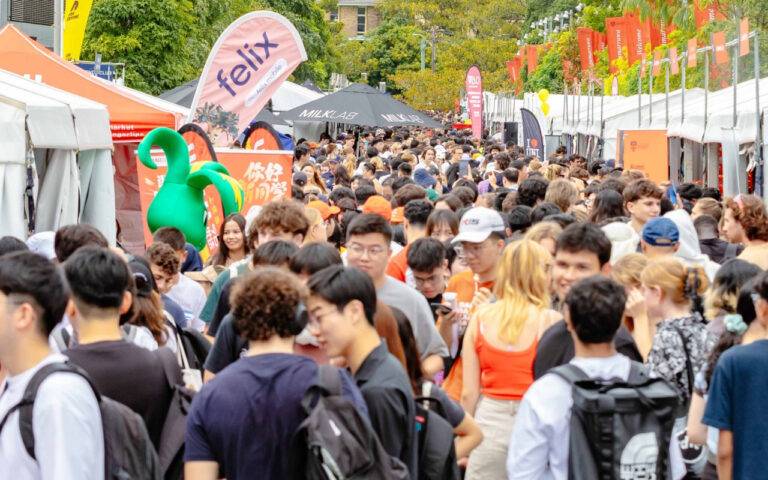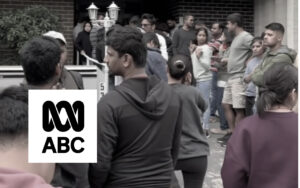Australia’s university sector is showing all the classic signs of an unsustainable system held together by temporary cash flows, political silence, and increasingly fragile illusions.
At the core of the crisis is a dangerous overreliance on international students – particularly from India and China – whose upfront payments now subsidise everything from academic salaries to construction debt. And the data is damning. The numbers indicate that it’s highly likely that most of these universities are financially insolvent if operated in their intended manner and the tertiary education sector – Australia’s third-largest industry – is on the verge of collapse.
The reason Anthony Albanese and Peter Dutton cannot seem to give clear, coherent answers when asked about their motivations as to why migration is being pushed so aggressively in a housing crisis is because if they reveal that the tertiary education sector is insolvent on a national scale, it will only serve to accelerate the nosedive of the sector. By allowing in more foreign students, they are hoping to land the problem on the other side of the election, or ideally, after their term as Prime Minister.
Take the University of Queensland (UQ), for example. In 2022, UQ reported a staggering operating deficit of $310.8 million, according to its annual financial report. This was not due to a collapse in enrolments or a one-off event; the university actually enrolled 55,441 students that year, with international students making up 38.9%, or approximately 21,574 individuals. These international students paid an average of $45,000 per year, generating a tuition revenue stream estimated at $970.8 million.
UQ itself admitted that 72.5% of its student income came from international students, despite them comprising less than 40% of the student body. That means for every international enrolment, the university received the equivalent of three domestic students’ worth of funding. Domestic students, who pay via the HECS-HELP system, typically generate only $15,000 per year in revenue—split between government subsidy and deferred student contribution.
When you reverse-engineer the deficit, UQ’s total expenditures in 2022 likely exceeded $1.28 billion. That translates to a cost of $23,086 per student, with the university losing approximately $5,605 per student that year. This is not a healthy model; it’s a high-cost institutional structure addicted to foreign cash, haemorrhaging money at a per capita rate that rivals failing enterprises.
And UQ is not alone. 25 out of 39 Australian universities reported operating deficits in 2023, according to Universities Australia. Meanwhile, the international education sector generated $34.8 billion in revenue nationwide in the 2023–24 financial year, up from $24.1 billion the year before.
This brings us to the most unsettling comparison: the current university funding model resembles the subprime mortgage crisis.
At first, banks only loaned money to those in a financial situation where they were (mostly) confident that they could repay it. At one time, international students were academically strong, carefully vetted, and financially secure. But as dependency increased, standards quietly dropped, just as they did in 2008, when it became apparent that lenders had been propping up their revenue with high-risk loans.
There are growing reports of students enrolling, attending a semester or less, and disappearing into the labour force. Their tuition is collected up front, so the institutions look away.
These are the subprime loans of higher education – profitable on paper, disastrous when scaled. Albanese has opened up more flexible pathways in introducing the “Australia-India Education Qualification Recognition Mechanism”, but this is only a delay tactic.
In the subprime mortgage crisis, it was not the big banks that fell first, it was smaller outfits like New Century and Ameriquest. So when 150 “ghost colleges” shut down in Australia for being visa mills, could this be an indication of first blood being drawn in the sector?
Universities continue to invest in massive construction projects, new campuses, and prestige infrastructure. UQ, like many Group of Eight institutions, is locked into multimillion-dollar developments while running an operational loss. These projects are often debt-funded and produce no immediate return, only future obligations.
With domestic enrolments in decline – down 8.9% since their 2017 peak – and HECS repayments stretched over decades, the only liquidity left in the system is coming from high-fee international students. But what happens when that pipeline falters?
Universities will face mass layoffs. Administrative bloat and inflated executive salaries will no longer be justifiable. Ghost enrolments, internal mismanagement, and quietly tolerated academic misconduct will be exposed through inquiries and audits. AI-driven degree delivery will accelerate the collapse by offering cheaper, faster, more personalised education at scale. The sandstone institutions, once symbols of national pride, will be left as legacy liabilities.
Think about it, does it make more sense that suddenly these universities have all had an enormous uptick in greed, or is it more likely they are over-bloated, over-committed and simply can no longer pay the bills the old way? Why would they compromise their reputations domestically for a generation or more of Australian students unless the repo man was knocking on their door today?
We are now observing them take in students of a lower quality and higher risk because they simply need every enrolment space filled. They are literally too big to fail and once a major institution does fail and we see what’s going on under the hood, the rest will fall like dominos along with them.
With Australian students doing “HECS strikes”, campaigning for “divestment” and simply no longer buying into the tertiary education, what was once a nice supplementary cash cow in the sector is now the source of life.
There’s simply no other logical reason why both sides of politics would suddenly be in such solidarity on mass Indian student migration to the detriment of all else.
Header image: A University of Sydney market day (USU – Facebook).





















